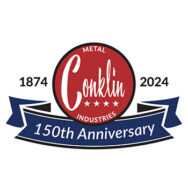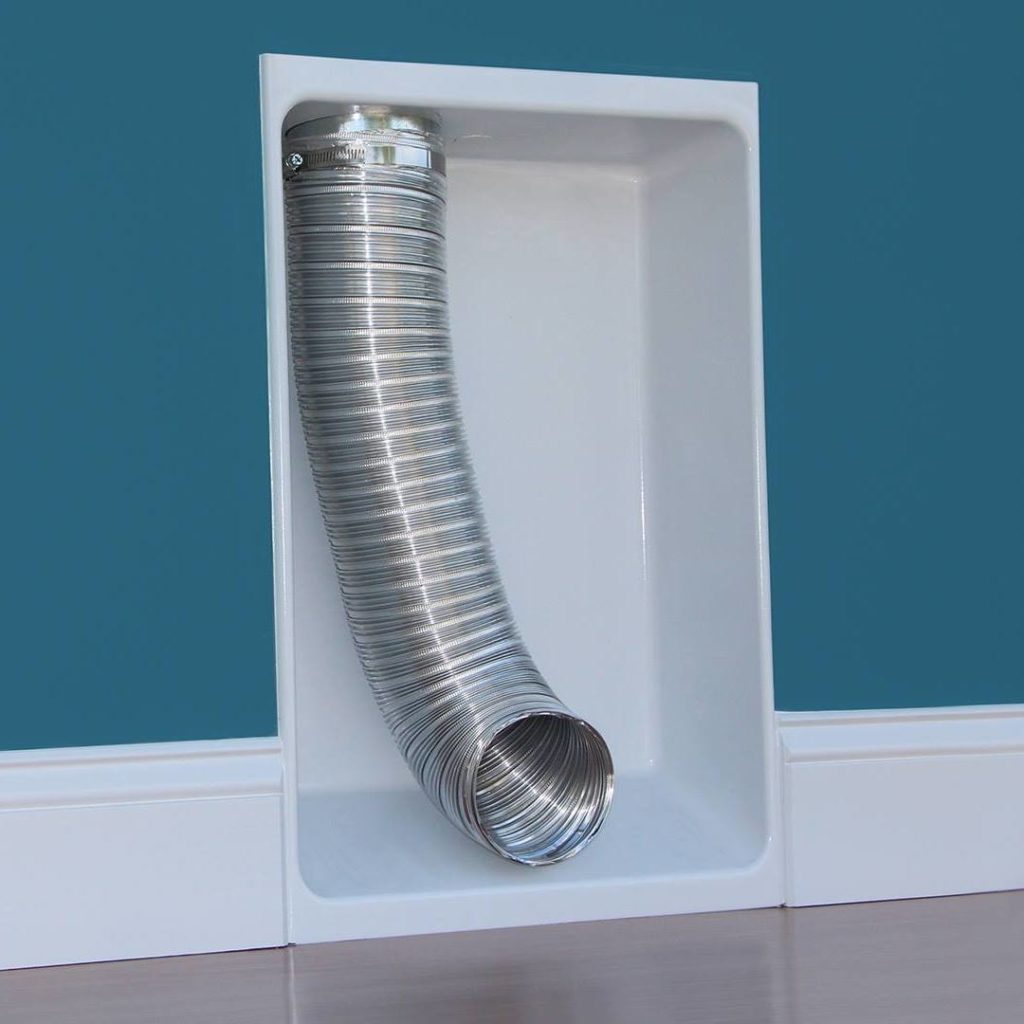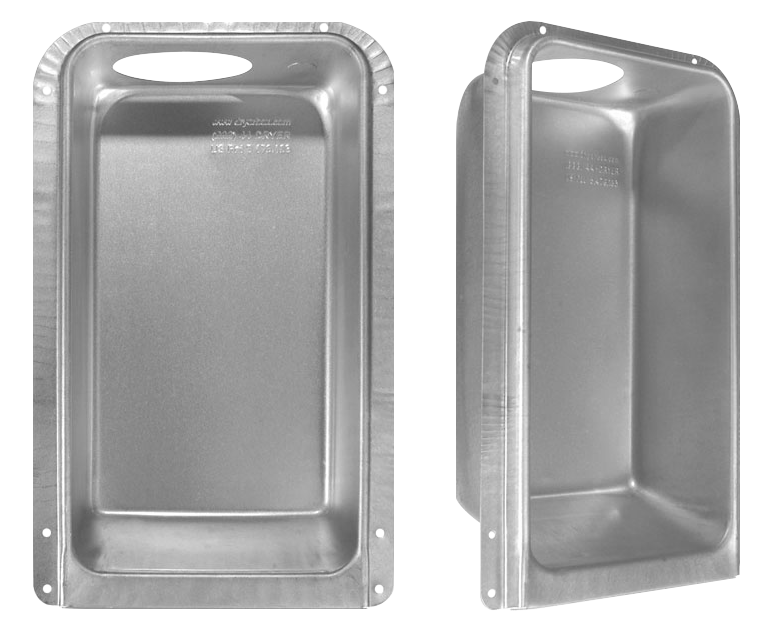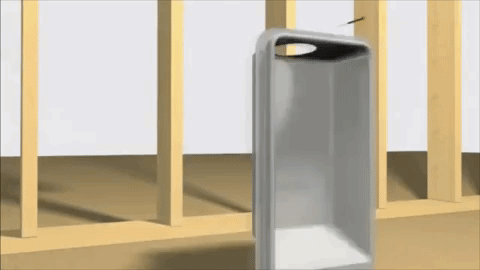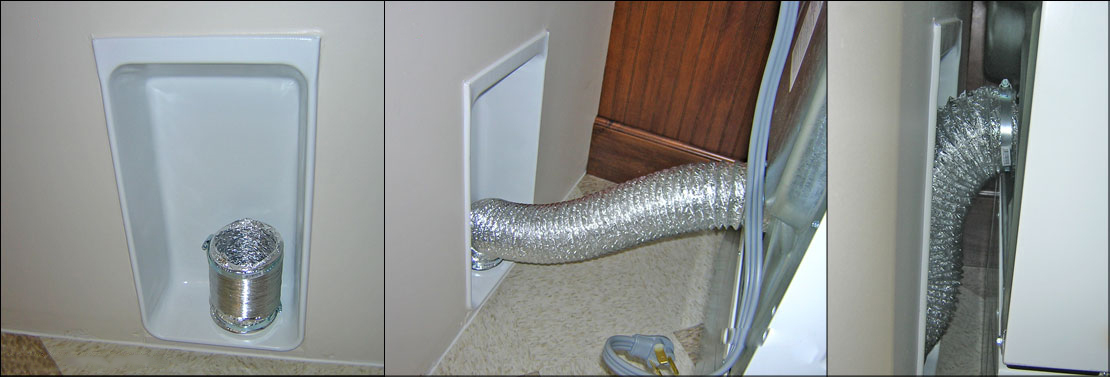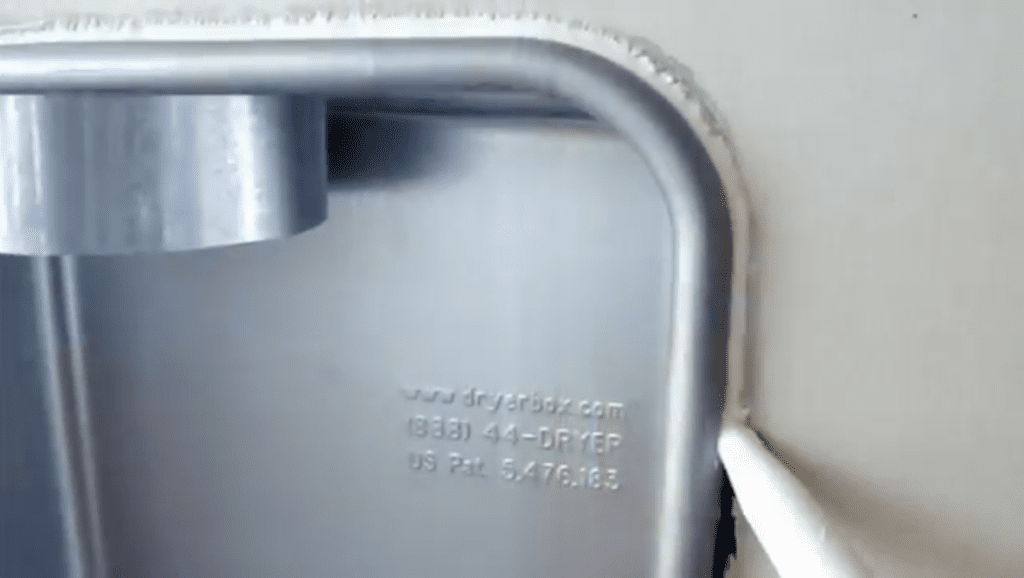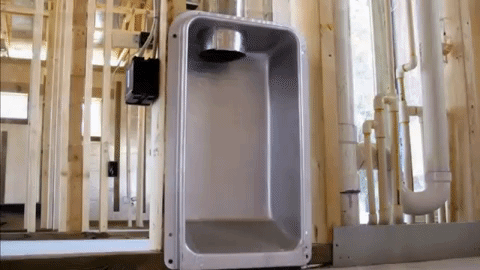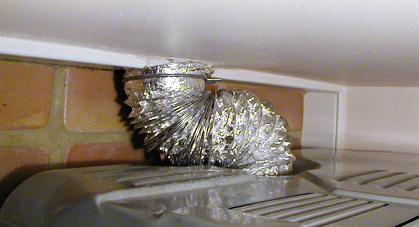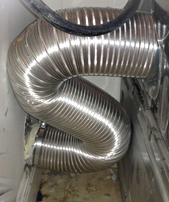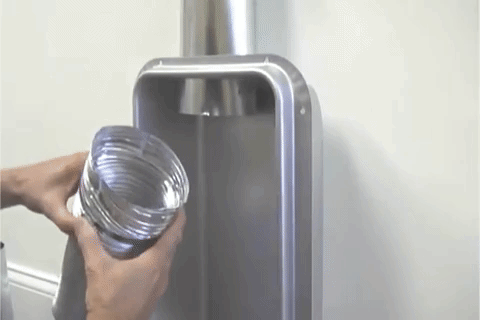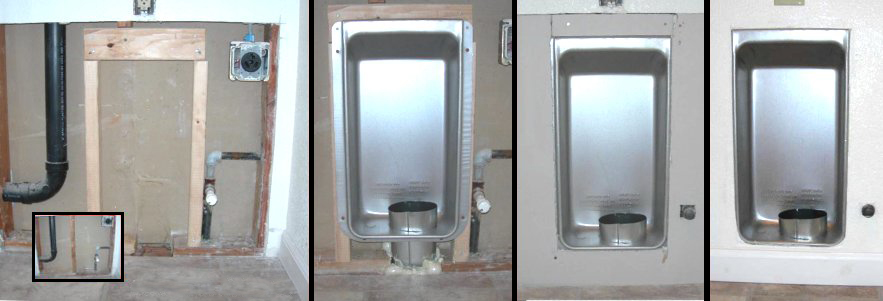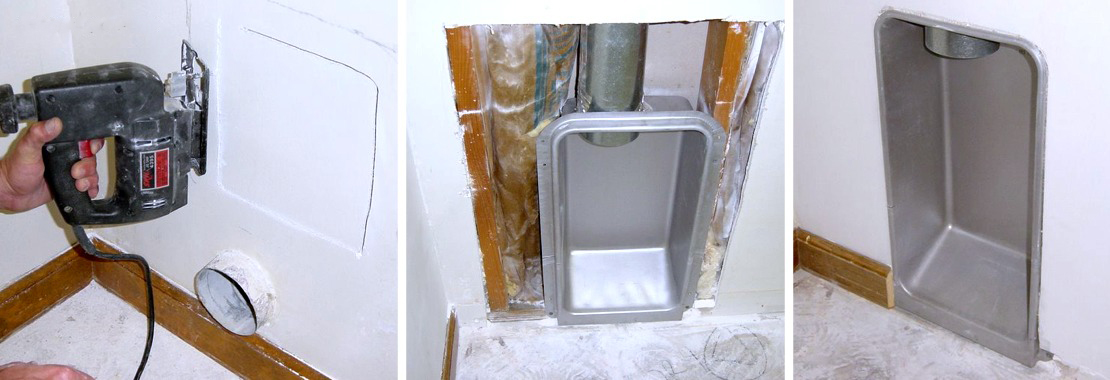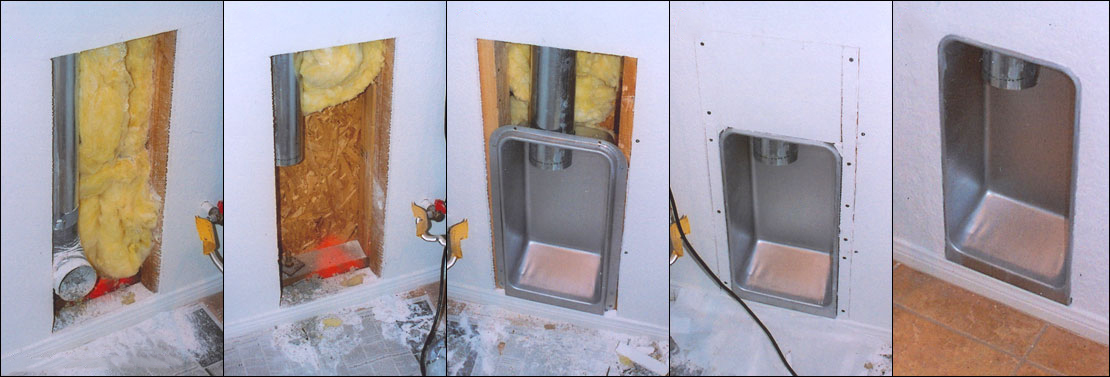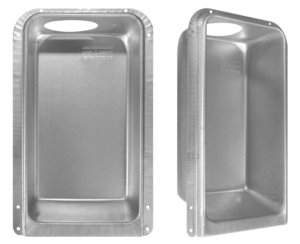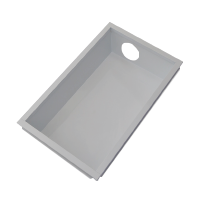Dryer Vent Box
In the past, homeowners had to put up with the inefficient venting of their dryer appliance exhaust due to numerous friction causing bends or kinks in the flex duct hose that connects the dryer to the wall exhaust pipe. Lint build-up and a fire hazard are the unwelcome by-products of these annoying bends. In order to accommodate these flow restrictive bends, the dryer appliance had to be located five to six inches away from the wall, taking away from valuable living area.
Today, you can place the dryer flush to the wall without crushing the exhaust hose or restricting airflow.
Simpler, cleaner install that truly finishes the laundry right. Protect the exhaust hose neatly in the wall, and ability to place the dryer flush to the wall without crushing the hose or otherwise restricting airflow. Adding this receptacle makes homes roomier and more efficient. It also makes them safer by reducing the fire hazard associated with dryer venting problems. It’s even UL Classified for a 1-hour wall.
- Cleaner, More Professional Finish
- Safer, Roomier, More Efficient Homes
- Give the Dryer Some Space
- Let the Dryer Perform at Peak Efficiency
- Help Protect Against Fire Spread
- Protect Exhaust Duct in the Wall
1. Reduces Fire Hazard
- It is surprisingly common to find problems with the transition hose behind the dryer being crushed. An Extra 5″ is Required to Be Certain the Hose is not Crushed. Dryer Box improves airflow by reducing the number of clogs. Avoiding extra bends and kinks behind the dryer also means shorter drying times and this saves on energy bills and appliance wear and tear
Lint is highly combustible and decreased airflow causes overheating of the exhaust environment, demanding excessive cycling of the high temperature limit switch and eventual failure.
Therefore, the exhaust hood (roof jacks especially), transition hose and metal ducts should be inspected and cleaned on a regular basis.
It is strongly recommended that the wire bound vinyl ducting not be used. In most states it is specifically disallowed in the building codes. Vinyl ducts often collapse causing blockage and lint build up within the dryer. This type of plastic or vinyl ducting can ignite or melt and will not contain a fire within the dryer.
The most preferred material for connecting the dryer to the outlet is the aluminum flexible duct.
Installation of the Dryerbox not only makes for a cleaner looking finish that saves space and saves energy. It can also protect against crushed hose which whould, otherwise, create a very real fire danger.
2. Saves Space
In the past, the metal 4″ exhaust pipe came right through the drywall or plaster wall and provided enough penetration to connect the flex transition hose between the dryer appliance and the exhaust pipe.
This connection hose usually lies on the floor requiring two tight bends to compensate for the locations of these two ports. At a minimum, these bends require about 5″ of space between the appliance and the wall. When measured, a typical 27″ wide dryer along with a matching washer held out just over 5″ encompasses more than two square feet of living area. At this point the Dryerbox paid for itself 12 times over.
For architects, layout of walls, closets and door frames is very critical. Many times the designer forgets to provide a full 5″ of space behind the dryer and the result is a door that won’t shut or an appliance that ends up in the hallway. The Dryerbox provides a valuable specification for the construction plans.
For builders, the Dryerbox® virtually eliminates callbacks due to clothes dryers not working properly. Safely recessing the transition hose in the wall makes the laundry room look and feel larger.
2. Saves Energy
Clothes dryers encourage evaporation through heat, tumbling and efficient air exchanging. In the past, the dryer connection hose usually laid on the floor behind the dryer with two tight restricting bends that were deformed a bit from the dryer crushing them against the wall.
That along with the hard 90 degree elbow in the wall contributes to air movement friction and efficiency loss in exhausting the hot damp air. Likewise, the clothes took longer to dry and use more energy to do it.
- Homeowners get an additional square foot of living area, a safer home and clothes that dry faster, requiring less tumbling and less electric or gas.
- Builders have less call-backs, a laundry room that appears larger and a new selling point.
- Contractors gain a 5 foot credit of exhaust pipe and take advantage of a simpler, cleaner install.
- For the architect, The Dryerbox® is GreenSpec listed and contributes two U.S. Green Building Council (USGBC) LEED credits to the building project. One for optimizing energy performance, and one for innovative design features.
Install Examples
